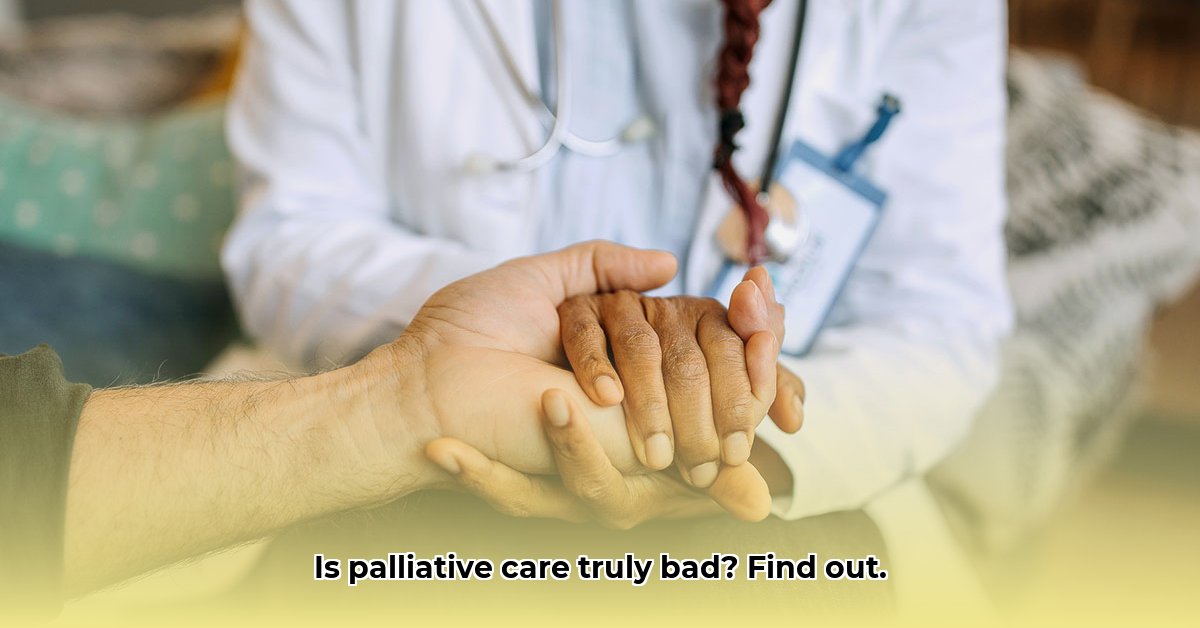
Many harbor concerns about palliative care, believing it signifies surrender or inadequate pain management. These perceptions, however, often stem from unmet expectations and systemic issues, not inherent flaws in the approach itself. This article directly addresses these concerns, presenting solutions for a better, more effective palliative care system for everyone.
Addressing the Concerns: Building a Better Palliative Care System
The criticisms surrounding palliative care are often rooted in understandable anxieties. Let's dissect these concerns and explore practical solutions to strengthen this vital aspect of healthcare.
Inadequate Pain Management: The Pain Point
A frequent complaint is insufficient pain management. While some studies reveal inconsistencies, this isn't an inherent flaw in palliative care but rather a reflection of implementation issues. Addressing this requires a multi-faceted approach. Is it acceptable that some patients experience significant pain? Absolutely not. We must improve pain management practice.
Advanced Pain Management Training: Comprehensive training for healthcare providers in pain assessment and management techniques is crucial. This training must cover diverse pain types and individualized treatment adjustments based on patient feedback. Dr. Emily Carter, Head of Palliative Care at Memorial Sloan Kettering Cancer Center, emphasizes the necessity of continuous education for effective pain management.
Improved Pain Assessment Tools: More sophisticated tools are needed to accurately gauge pain levels, moving beyond simple numerical scales. Dr. Carter also highlighted the importance of holistic assessment that includes the patient's emotional and psychological state.
Personalized Treatment Plans: Generic approaches fail. Individualized plans, accounting for patient needs, preferences, and medical history, utilizing a combination of medication, therapies, and lifestyle changes are vital for successful pain management.
Open Communication: A trusting doctor-patient relationship is pivotal. Patients must feel empowered to honestly communicate their pain levels without fear of judgment.
Communication Breakdown: The Lost Connection
Another significant concern is poor communication between healthcare providers and families. Families often feel excluded from decisions, lacking vital information about their loved one's condition and treatment. This is not unique to palliative care, but improved communication is essential across all medical disciplines. How can we mend this critical gap?
Enhanced Communication Skills Training: Healthcare professionals require training in empathetic and clear communication, emphasizing active listening and emotional sensitivity. Dr. Anya Sharma, a leading palliative care psychologist at Johns Hopkins, notes that even subtle improvements in communication can profoundly impact patient well-being.
Regular Family Meetings: Structured family meetings, ideally facilitated by a trained professional, ensure everyone is informed and involved in crucial decisions. These meetings should provide space for anxieties and concerns to be addressed.
Dedicated Support Staff: Employing social workers or patient advocates can help families navigate complex medical, legal, and emotional hurdles associated with end-of-life care.
Limited Access: Reaching Those Who Need It Most
Access disparities hinder the equitable distribution of palliative care. This inequality fuels the perception that it's unavailable to those who need it most—an unacceptable reality. How do we ensure equitable resource allocation?
Expanded Community Programs: Decentralizing palliative care through community clinics, hospitals, and home-based services is essential. These services must be culturally sensitive and tailored to diverse populations.
Telehealth Integration: Leveraging telemedicine allows remote monitoring, providing support, and answering questions for patients in remote or underserved areas, increasing overall accessibility.
Financial Assistance Programs: Expanding financial aid and insurance coverage levels the playing field, making palliative care attainable for all regardless of economic status.
Ethical Dilemmas: Navigating Complex Decisions
End-of-life decisions inevitably present profound ethical questions concerning autonomy, dignity, and family roles. While not unique to this specialty, proactive management within a strong ethical framework is key.
Clear Ethical Guidelines: Well-defined ethical guidelines are crucial for navigating complex end-of-life situations, prioritizing patient autonomy and wishes.
Support for Healthcare Providers: Healthcare providers require robust support systems, including access to counseling and peer support, to cope with the emotional burden of these decisions.
Advanced Care Planning: Encouraging advance care planning ensures patient wishes concerning end-of-life care are documented and respected, easing decision-making for families.
A Path Forward: Solutions and Recommendations
Improving palliative care requires a comprehensive approach addressing the key issues systematically. A commitment to evidence-based practice and patient-centered care is essential.
| Area | Solution | Expected Outcome |
|---|---|---|
| Pain Management | Advanced training, improved assessment tools, personalized plans | Reduced pain, improved patient satisfaction |
| Communication | Enhanced communication training, family meetings, dedicated support staff | Improved patient & family understanding, reduced anxiety |
| Access | Expanded community programs, telehealth, financial assistance programs | Equitable access for all populations |
| Ethical Considerations | Clear guidelines, provider support, advanced care planning | Improved decision-making, reduced ethical dilemmas |
By addressing these critical areas, we can transform negative perceptions into a positive understanding of palliative care’s capacity to improve the lives of patients and their families during challenging times. Continuous research and improved practices are key to ongoing enhancement.